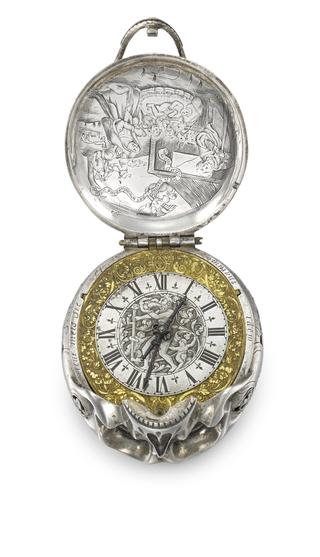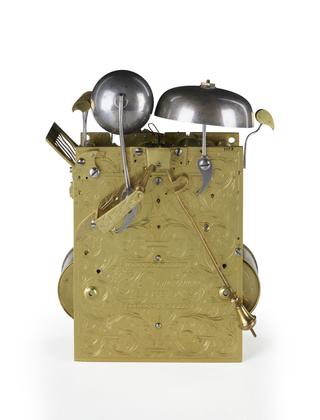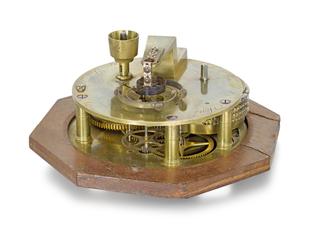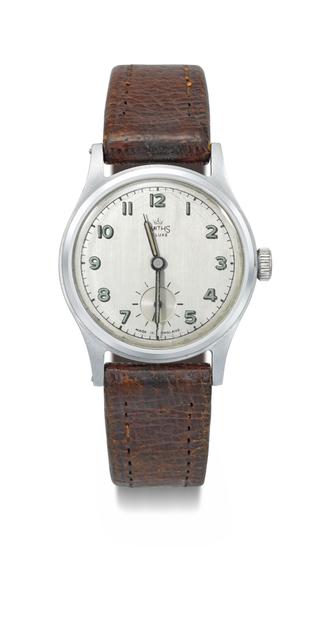
Pendulum clock by Pieter Visbach
- Made:
- 1660 in Netherlands



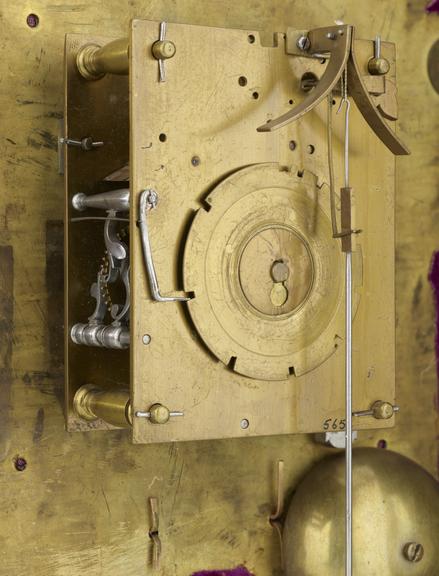


Spring driven, striking pendulum clock, in ebonised wood case by Pieter Visbach, The Hague, c.1660. Brass dial covered with modern crimson velvet and applied silver chapter ring with every minute marked. Replica gilt hands. Applied name plaque signed 'Pieter Visbach Fecit Hagae met priuilege'. The dial is hinged to the case and carries the movement on the back of it. The movement is of 8-day duration with verge escapement, pendulum with silk suspension and cycloidal cheeks. A single going barrel drives both the going and striking trains.
This clock contains many of the attributes of Christiaan Huygens’s original design for a pendulum clock. It is signed ‘Pieter Visbach Fecit Hagae met priuilege’, or ‘Peter Visbach of the Hague by permission’ – that is to say made within the terms of Huygens’s patent. It has been much altered and rebuilt during its life, including the pendulum and cycloidal cheeks, but there is no doubt that the clock began life at this exciting and highly significant period. Clockmakers' Museum No. 565
Details
- Category:
- Clockmakers
- Collection:
- The Worshipful Company of Clockmakers
- Object Number:
- L2015-3450
- Materials:
- brass (copper, zinc alloy), steel (metal), lead (metal), wood (unidentified), textile and silvered brass
- Measurements:
-
overall: 264 mm x 220 mm x 100 mm,
- type:
- spring clock and verge escapement
- credit:
- Lent by the Worshipful Company of Clockmakers
